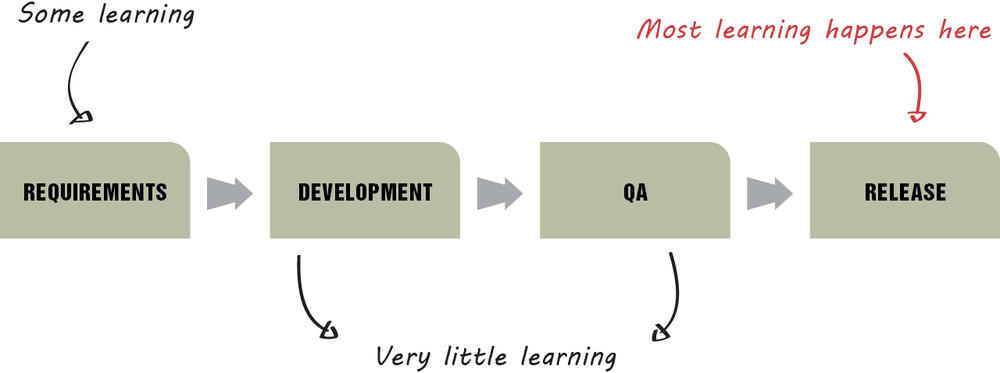Chapter 9. Get to Release 1.0
Reduce scope and shorten the cycle time between requirements and release so that you get to the learning parts faster.
Product Development Gets in the Way of Learning
Let’s start by taking a closer look at where learning (about customers) happens during a typical product development cycle (see Figure 9-1).

While some learning happens during the requirements-gathering stage, most learning happens after you release your product. Even though building a product is the purpose of a startup, very little learning happens during development and QA. Sure, you’re learning about other things then, just not about customers.
We obviously can’t eliminate development and QA, but we can shorten the cycle time from requirements to release so that you get to the learning parts faster.
The first step is to reduce the scope of your minimum viable product (MVP) to its essence so that you build the smallest thing possible.
Reduce your mVP
A danger with iterating through mock-ups during the Solution interview is that it is quite easy to get carried away and end up with more than you need for your MVP. In order to reduce waste and speed up learning, you need to pare down your mock-ups so that all you have left is the essence of your product: your MVP.
Reducing the scope of your MVP not only shortens your development cycle, but also removes ...
Get Running Lean, 2nd Edition now with the O’Reilly learning platform.
O’Reilly members experience books, live events, courses curated by job role, and more from O’Reilly and nearly 200 top publishers.

